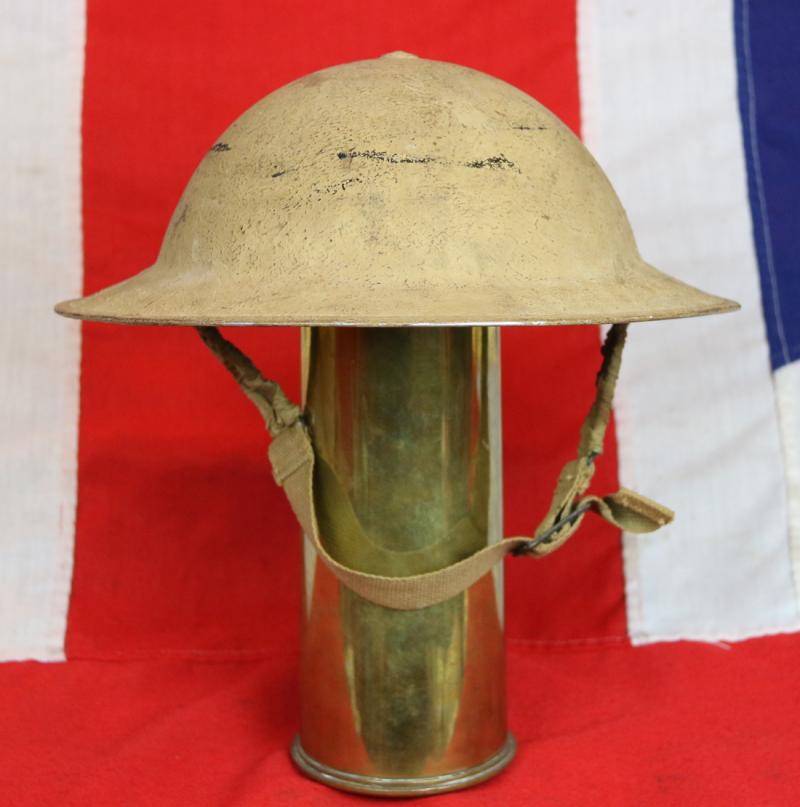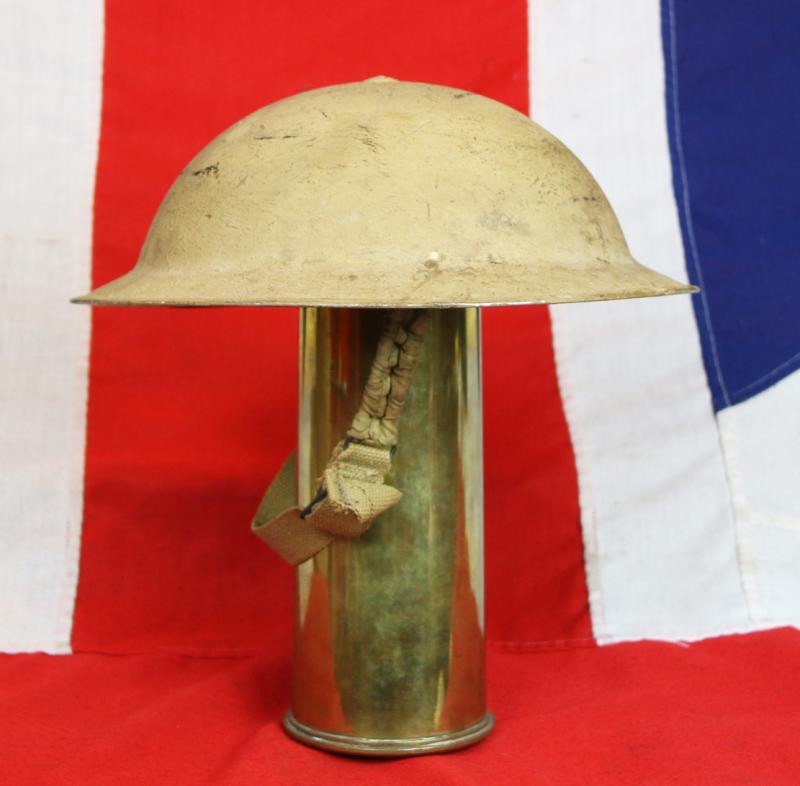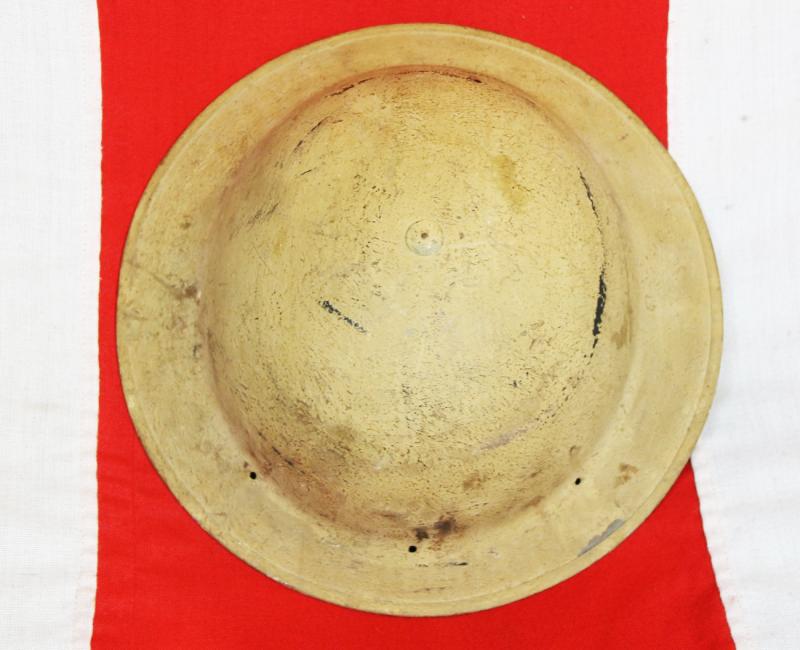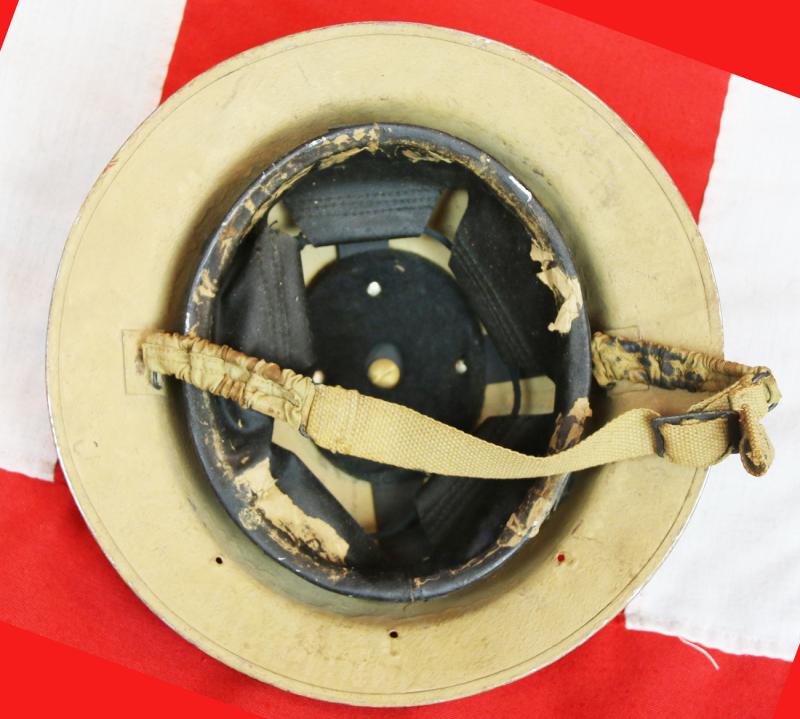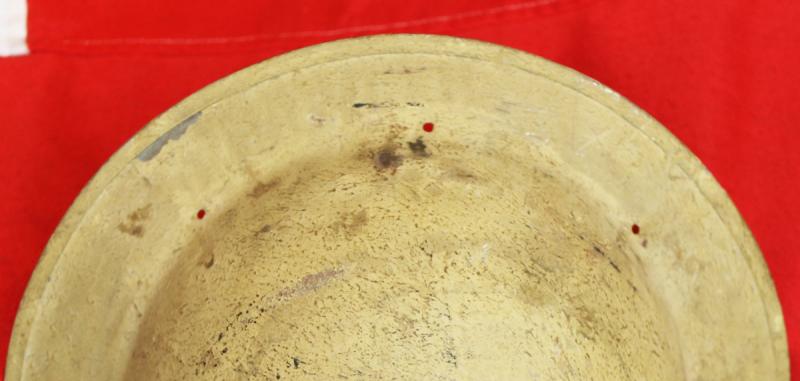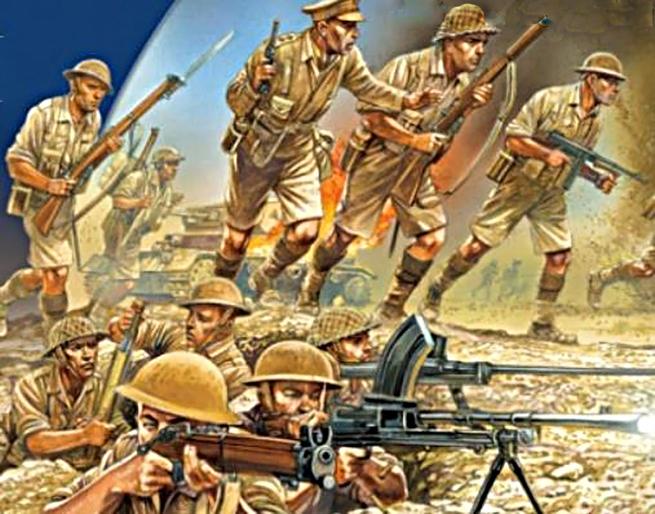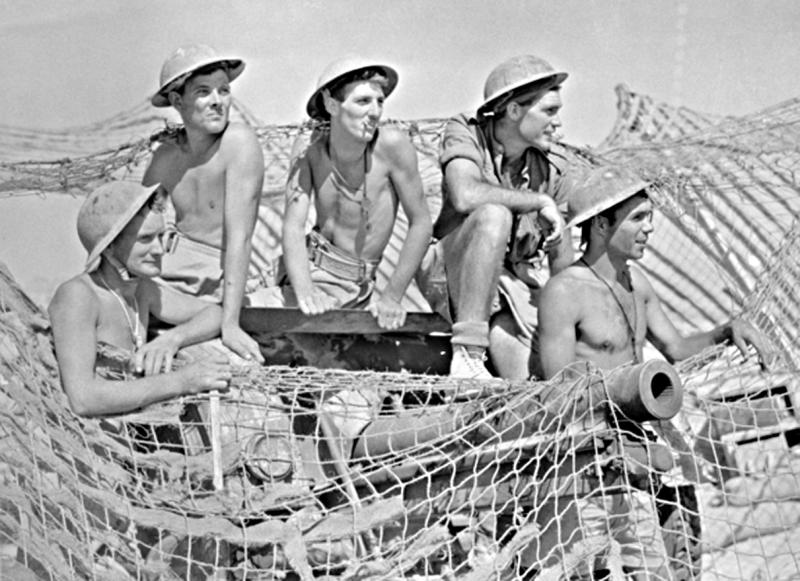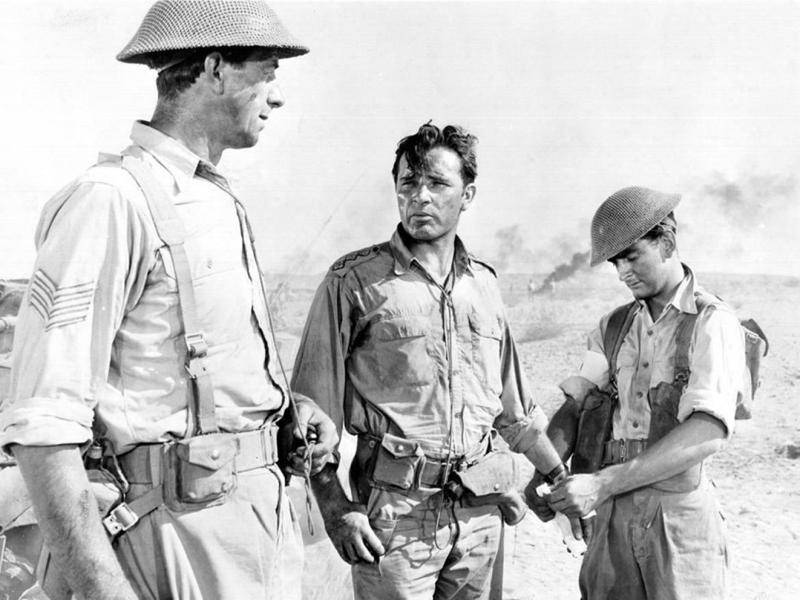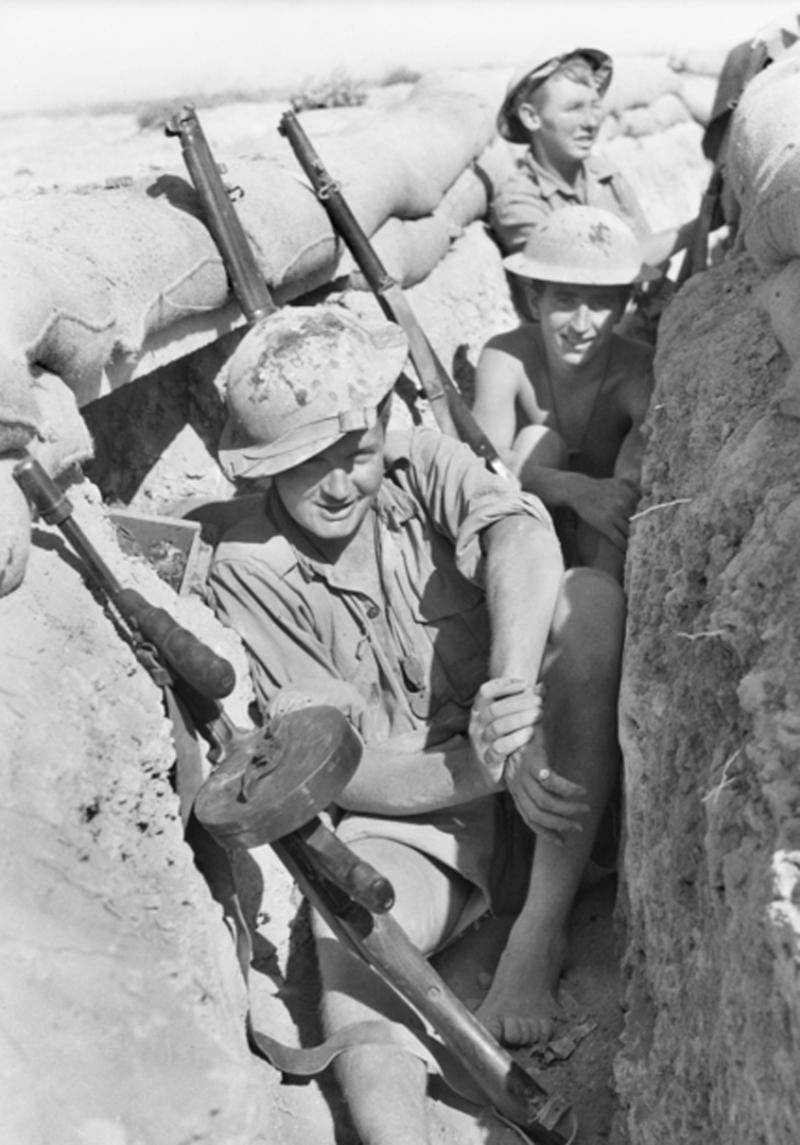A Very Good Original 'Desert Rat' British WW2 British Infantry 'Brodie' Helmet. With Desert Sand Camouflage. Almost Certainly Made by Jager Rand, South Africa For The 'Desert Rats' Combatants
This great historical helmet we would happily rate as 'very likely, not possible to improve upon'.
Original British WW2 helmets are still very, very inexpensive compared to their German counterpart. A good and similar condition, but German, M35 Afrika Korps desert camo pattern helmet, could be now up to ten times the price of this British equivalent. This situation can't last for long!. For example, British WW2 Parachute Regiment helmets and combat uniforms are now fetching up to 10 times the price they were just 5 years ago. Almost catching up with the German counterpart versions.
Complete with original 1938 pattern MK II liner and chinstrap intact. It has the usual 3 holes in the back for the attachment of a neck cover or havelock used by desert forces for sun protection and ventilation. This is a very good example of a genuine British / South African manufactured Mark II steel helmet, complete with an original liner and chin strap. It comes with a correct "Desert Tan" textured camouflage paint job, as used in the Africa Campaign of the war, where Troops from Britain and South Africa saw much fighting. There is some wear around the stainless steel rim, but nothing major.
Almost certainly maker stamped and issue dated but the camouflage is thick and course and obscures any of the maker markings and it would be bad to try to remove it to view any markings
The original liner is in very good used condition, with nice oil cloth, and only light wear from service. It does have some paper stuck to the liner, which was used during post war storage to stack these helmets one atop another without sticking. This was unfortunately often not entirely successful. The original fibre support is also in great shape and
A helmet of a former Desert Rat veteran of the Army that fought Rommel's Afrika Korps, who, under Montgomery's command, kicked the DAK's bottoms at El Alamein then many were later transferred to Italy to fight from the south right through to Rome,
The Eighth Army was a field army formation of the British Army during the Second World War, fighting in the North African and Italian campaigns. Units came from Australia, British India, Canada, Free French Forces, Greece, New Zealand, Poland, Rhodesia, South Africa and the United Kingdom.
Significant formations which passed through the Army included V Corps, X Corps, XIII Corps, XXX Corps, I Canadian Corps and the II Polish Corps. On 26 November the Commander-in-Chief Middle East Command, General Sir Claude Auchinleck, replaced Cunningham with Major-General Neil Ritchie, following disagreements between Auchinleck and Cunningham. Despite achieving a number of tactical successes, Rommel was forced to concede Tobruk and was pushed back to El Agheila by the end of 1941. In February 1942 Rommel had regrouped his forces sufficiently to push the over-extended Eighth Army back to the Gazala line, just west of Tobruk. Both sides commenced a period of building their strength to launch new offensives but it was Rommel who took the initiative first, forcing the Eighth Army from the Gazala position.
Ritchie proved unable to halt Rommel and was replaced when Auchinleck himself took direct command of the army. The Panzer Army Afrika were eventually stopped by Auchinleck at the First Battle of El Alamein. Auchinleck, wishing to pause and regroup the Eighth Army, which had expended a lot of its strength in halting Rommel, came under intense political pressure from British Prime Minister Winston Churchill to strike back immediately. However, he proved unable to build on his success at Alamein and was replaced as Commander-in-Chief Middle-East in August 1942 by General Harold Alexander and as Eighth Army commander by Lieutenant-General William Gott. Gott was killed in an air crash on his way to take up his command and so Lieutenant-General Bernard Montgomery was appointed in his place. Alexander and Montgomery were able to resist the pressure from Churchill, building the Army's strength and adding a pursuit formation, X Corps, to the Army's XIII and XXX Corps.
At the beginning of November 1942 the Eighth Army defeated Rommel in the decisive Second Battle of El Alamein, pursuing the defeated Axis army across Libya and reaching the Mareth defensive line on the Tunisian border in February 1943, where it came under the control of 18th Army Group. The Eighth Army outflanked the Mareth defences in March 1943 and after further fighting alongside the British First Army, the other 18th Army Group component which had been campaigning in Tunisia since November 1942, the Axis forces in North Africa surrendered
Code: 25846
375.00 GBP

